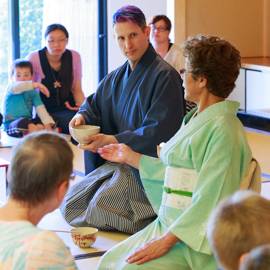Located at 2000 S. Lincoln Avenue in Urbana, Japan House is most likely a place that you have passed by altogether, thinking it was reserved for special groups or students due to how it’s tucked away out of view of the street. Perhaps you did actually visit once or twice, but only for the gardens, or maybe even the nearby arboretum. It’s very likely that you’ve never actually seen into the House itself, leaving you to wonder if the inside actually exists. But did you know that not only can you enter Japan House, but you also have the unique opportunity to take part in an authentic Japanese Tea Ceremony? Every Thursday from 3-4 p.m., Japan House offers a hosted tea ceremony to give you a taste of an ancient Japanese tradition, not to mention a wonderful moment of peace and tranquility away from the hurry of the world.
Check out their website for more details.

Japan House was designed to be an educational space for people in the community, and craftsmen from Japan came here to help design and build it. While the main area is large, decorative, and open to accomodate the state for group demonstrations, there are smaller rooms for more intimate ceremonies.
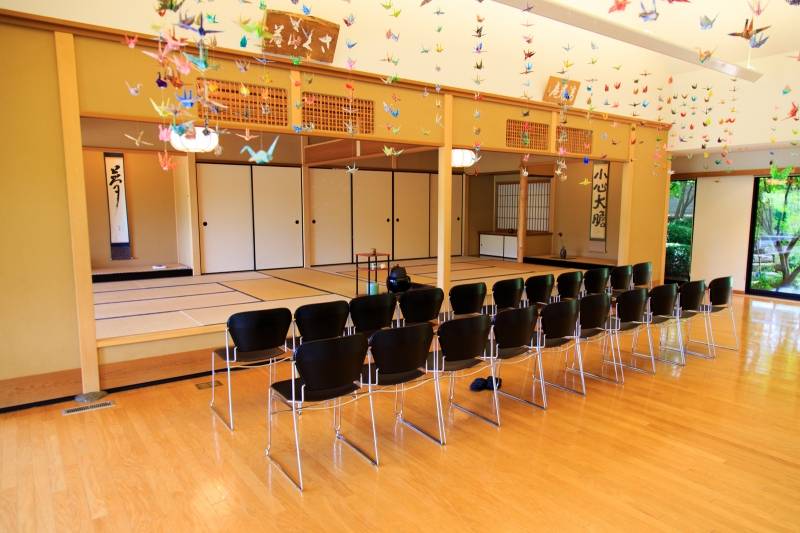
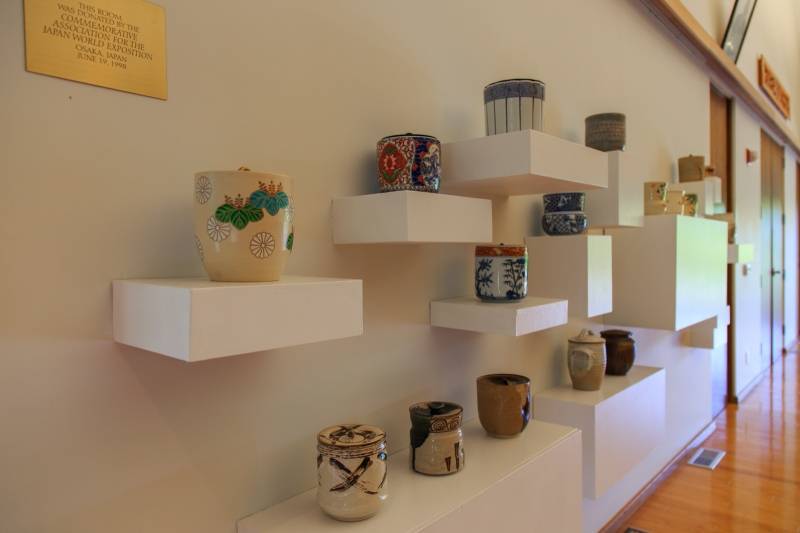

Our guide for this ceremony was Marc Anthony Macon, who has been helping to perform the demonstration for about three years. “By chance I was walking by one day and saw a group of people inside, and I didn’t even know you could go inside,” said Macon, who moved here from New York seven years ago. “I came in and they asked if I wanted to take part in a tea ceremony. I said yes, and I’ve been involved ever since. Aside from being fun, the tea ceremony has also helped me make a series of small lifestyle changes to great personal benefit; I’ve quit smoking and have lost 50 pounds.”
Below, Macon kneels on the stage before addressing the guests.
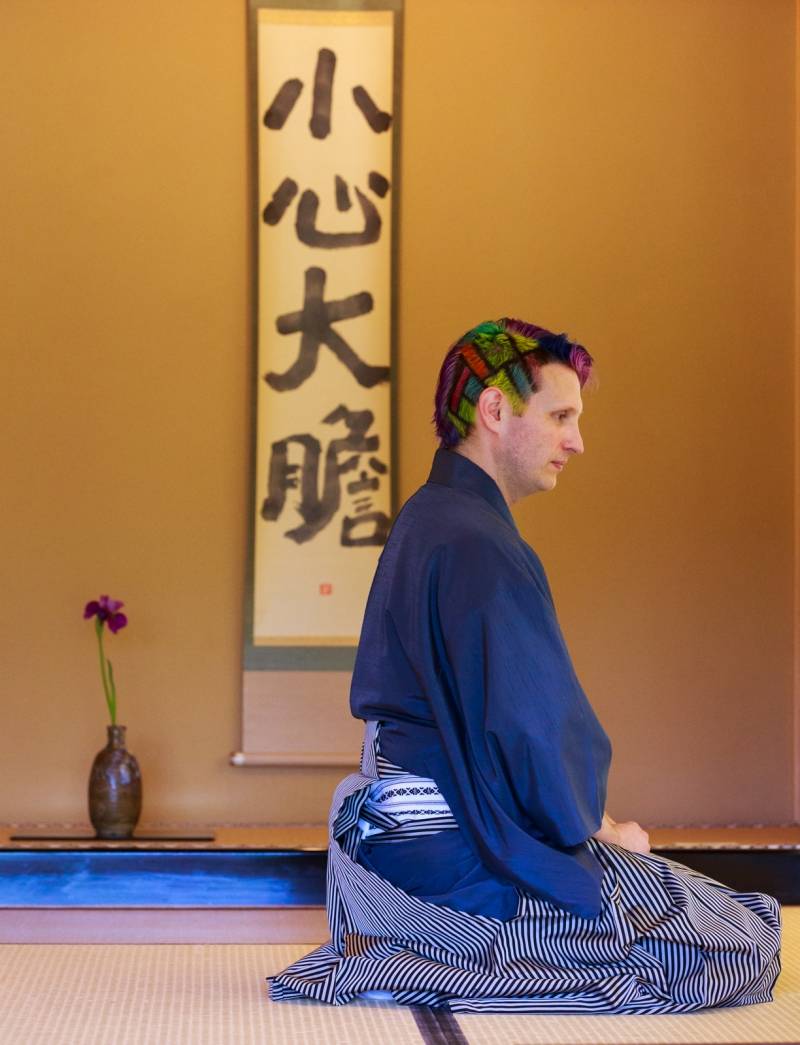
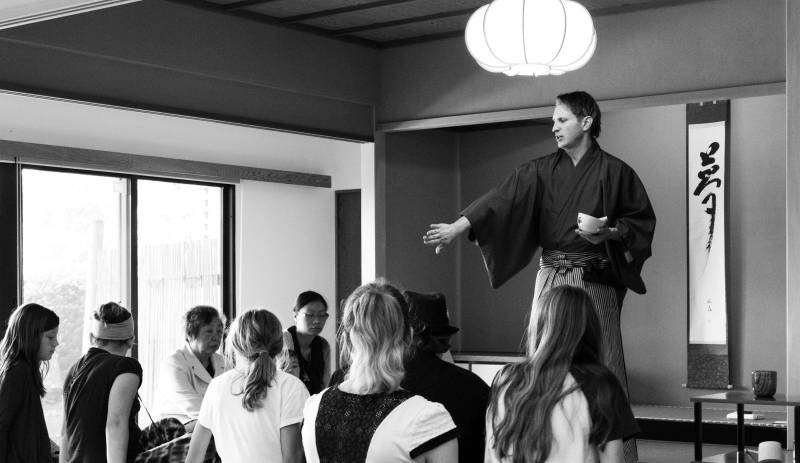
Below, a sweet to be eaten just before drinking tea is passed out.
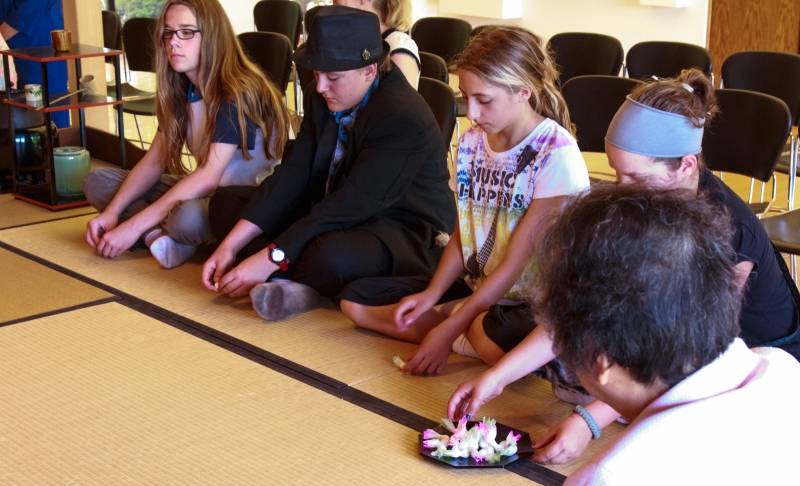
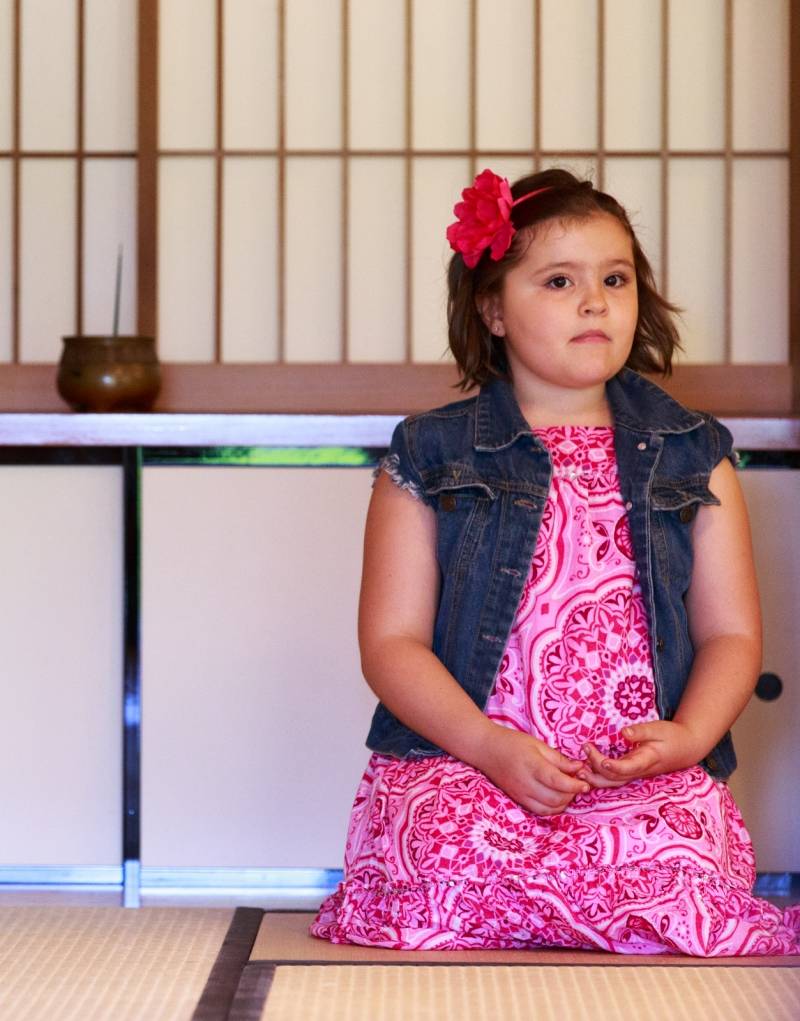
While the group demonstration takes only about an hour, full tea ceremonies, often held for special occasions, can last six to eight hours or more. These are very involved and have several different phases that slowly move you through the gardens and into the house for a meal, then back to the gardens for more quiet contemplation before entering the house once more for tea. “A tea ceremony is all about slowing yourself down,” explained Macon. “Even the way the stepping stones in the garden are uneven and oddly spaced apart, everything is made to make you slow down and think about what you are doing. It’s also ridiculously intimate- as intimate as you can be without touching.”
On this particular day a group of about twenty adults and children participated, and they were first given a tour of the house and a brief explanation of the ceremony itself by Virgie Young, one of the volunteers. Young explained what would be seen during the ceremony as well as behavioral expectations. While typically held in silence, both Macon (who assisted on the stage) and Young provided some helpful commentary at times to better describe what Sumie Burten, the main host, was doing.
Below, Young explains to guests what they’ll see during the ceremony.
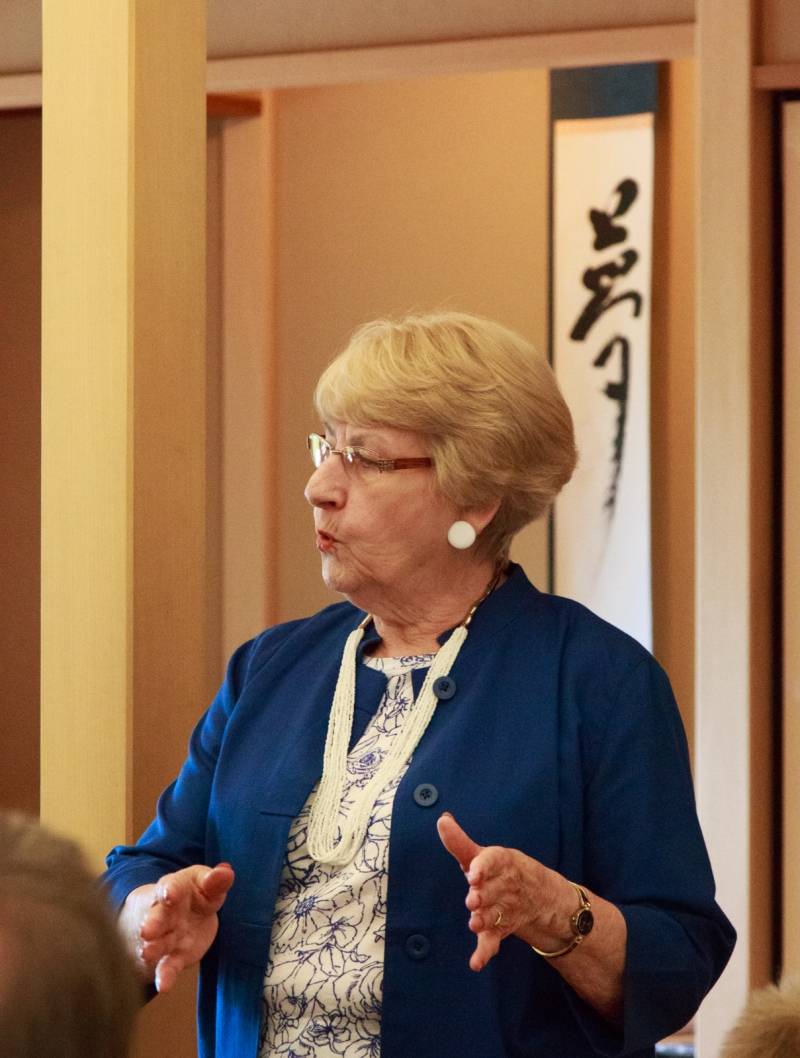
Below, our host Sumie Burten enters.

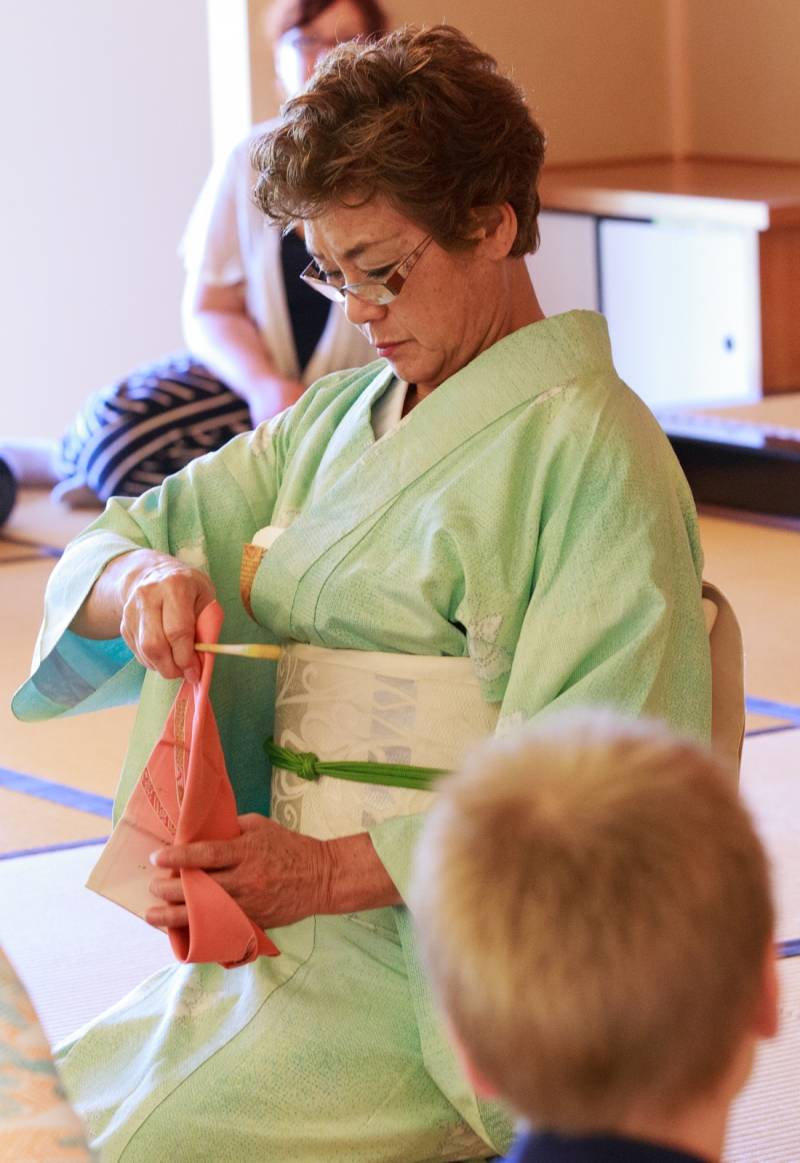
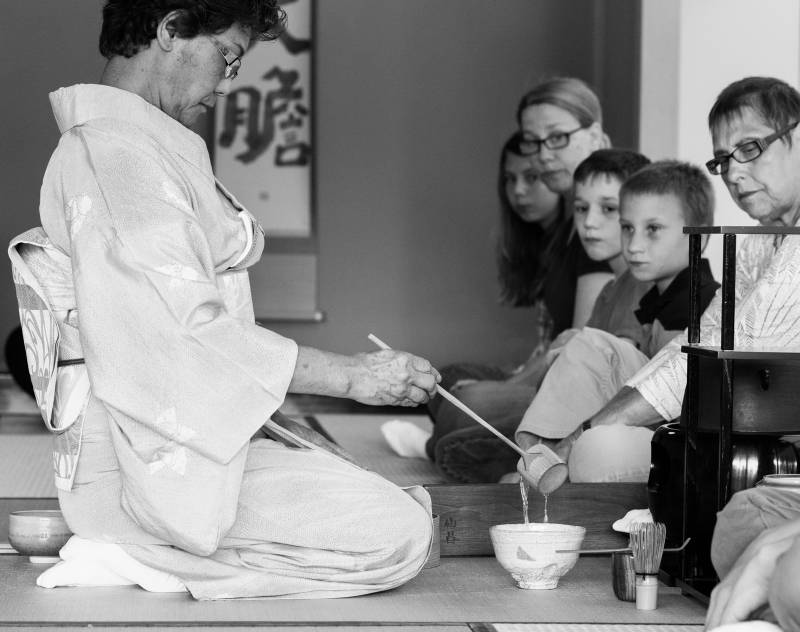
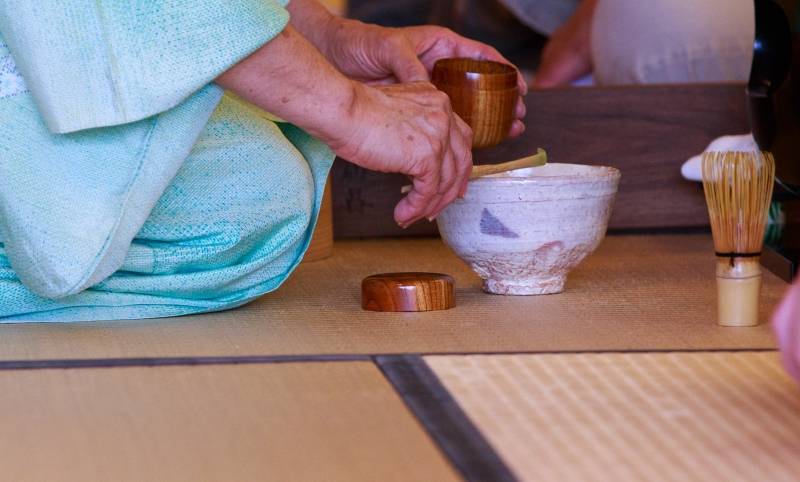
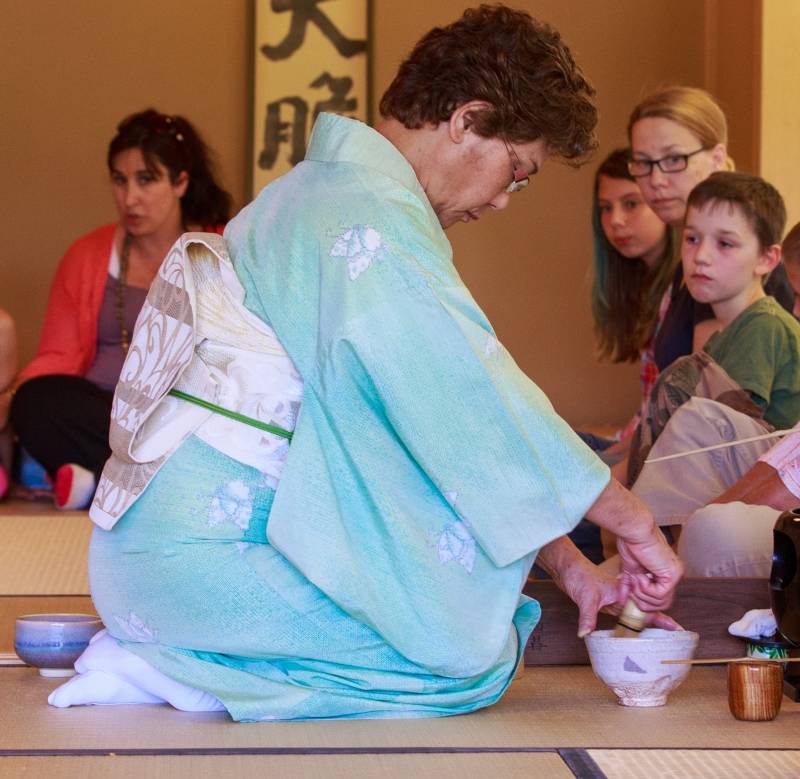
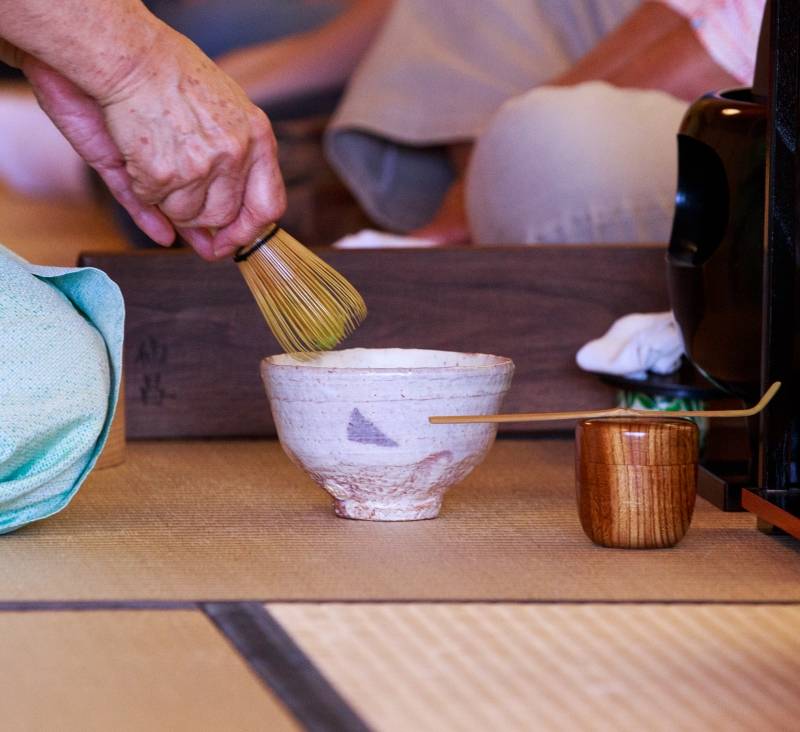
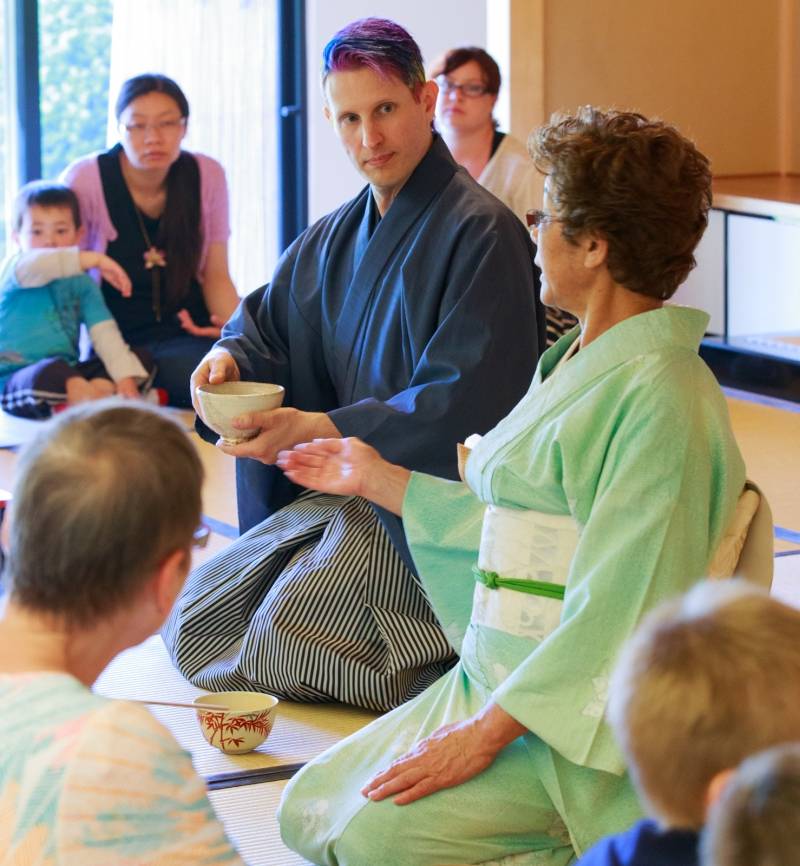
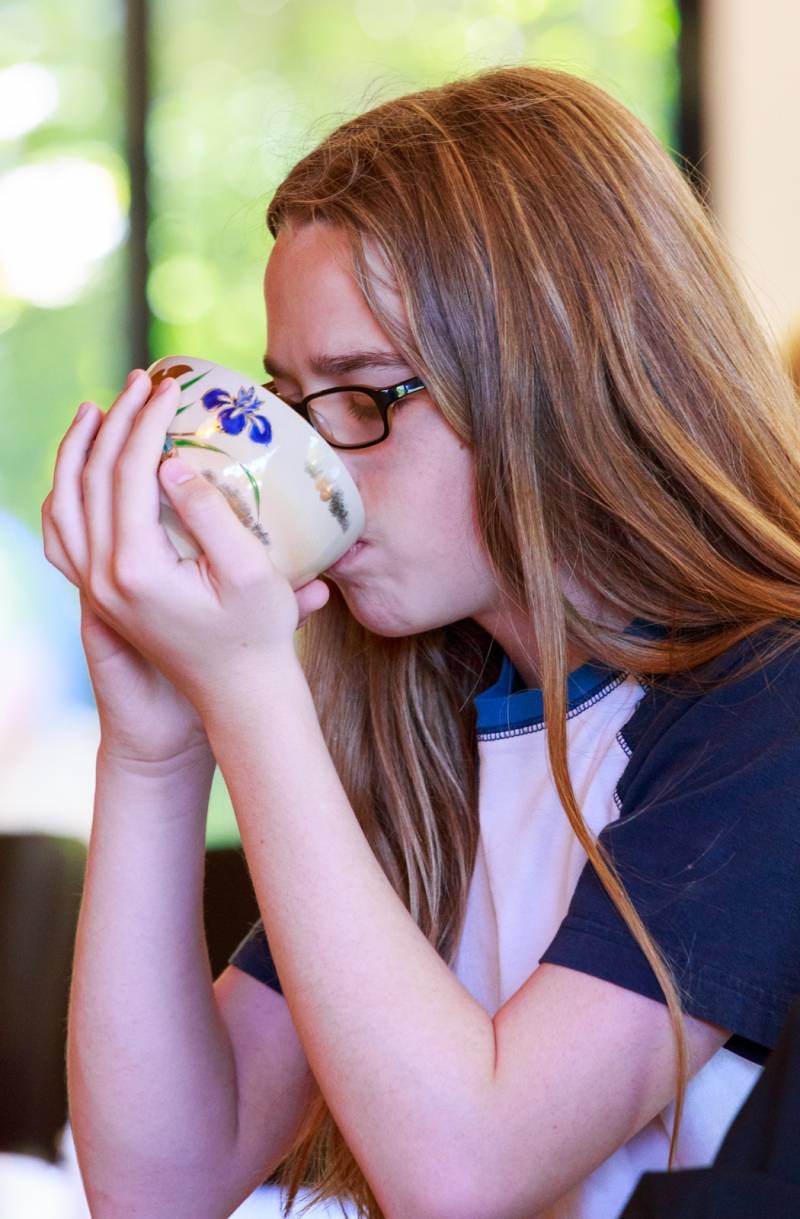
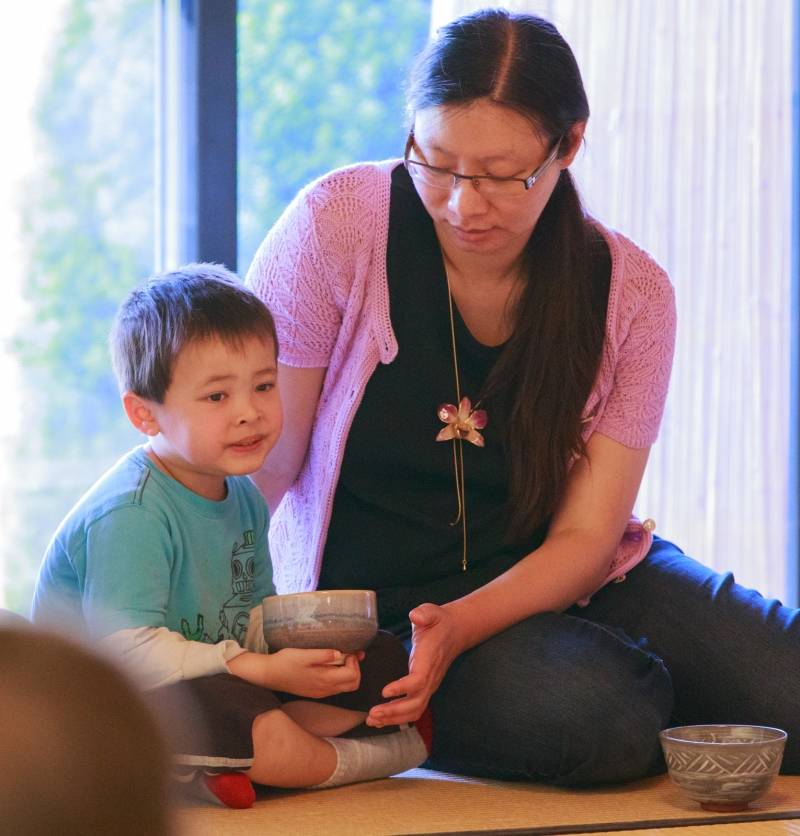
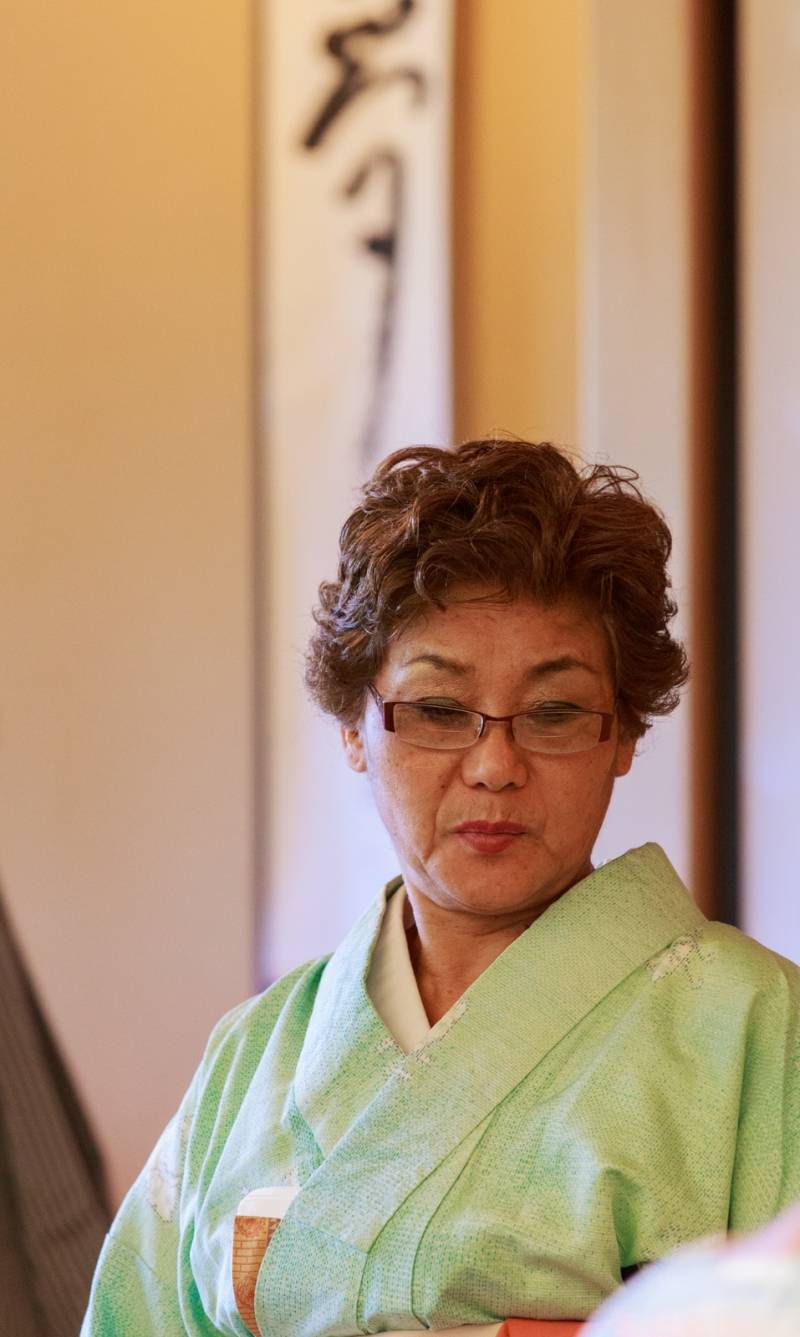
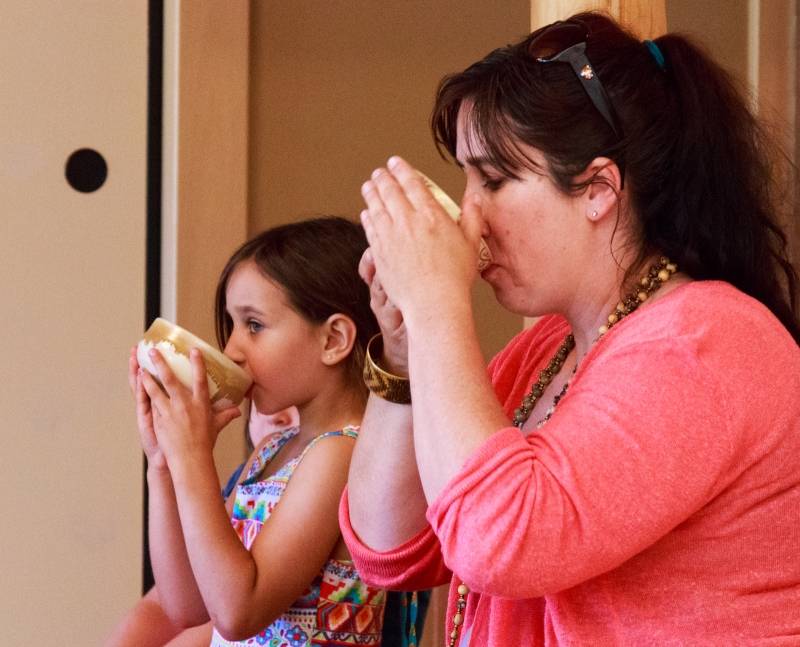
After everyone had their tea, which tasted slightly earthy and did not carry any aftertaste, the ceremony was completed with Burten performing the ritual cleanup and leaving the stage before returning with Macon for a question and answer session. A few interesting facts that were learned:
- There are at least 850 types of tea ceremonies that can be performed, which originate from 3 original tea schools (Japan House performs Urasenke, or “Back of house”). Differences can be as subtle as how the whisk string is tied!
- Male kimonos and handkerchiefs are expected to be muted in style and color, while those of females are expected to be more intricate and colorful.
- While the folding of the kerchief during the ceremony is precise, it’s designed more so that only the necessary amount of cloth is used at the proper time (e.g. you don’t need a large square to wipe a small part of the bowl).
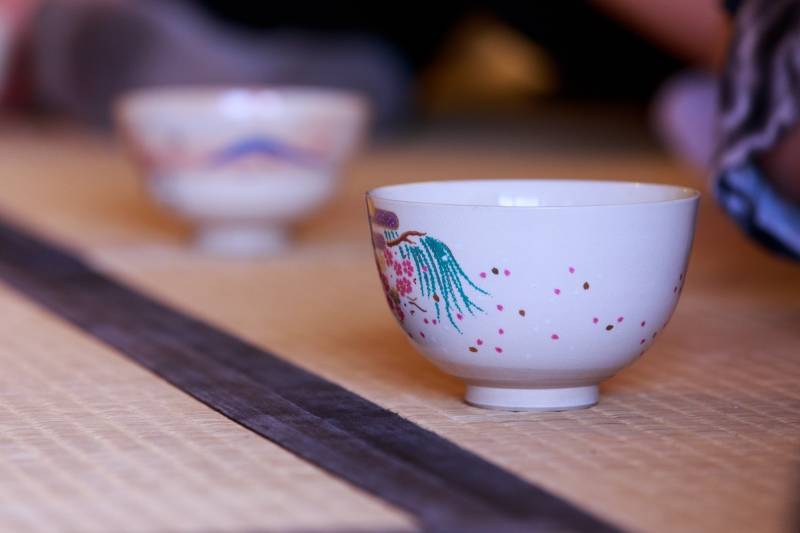
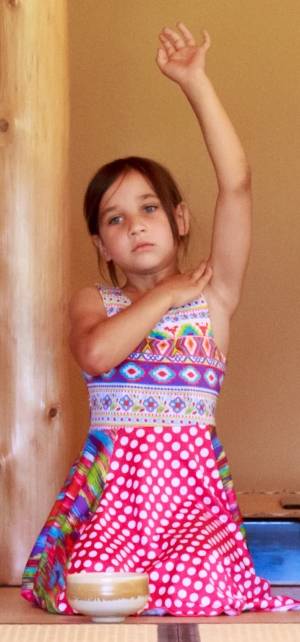
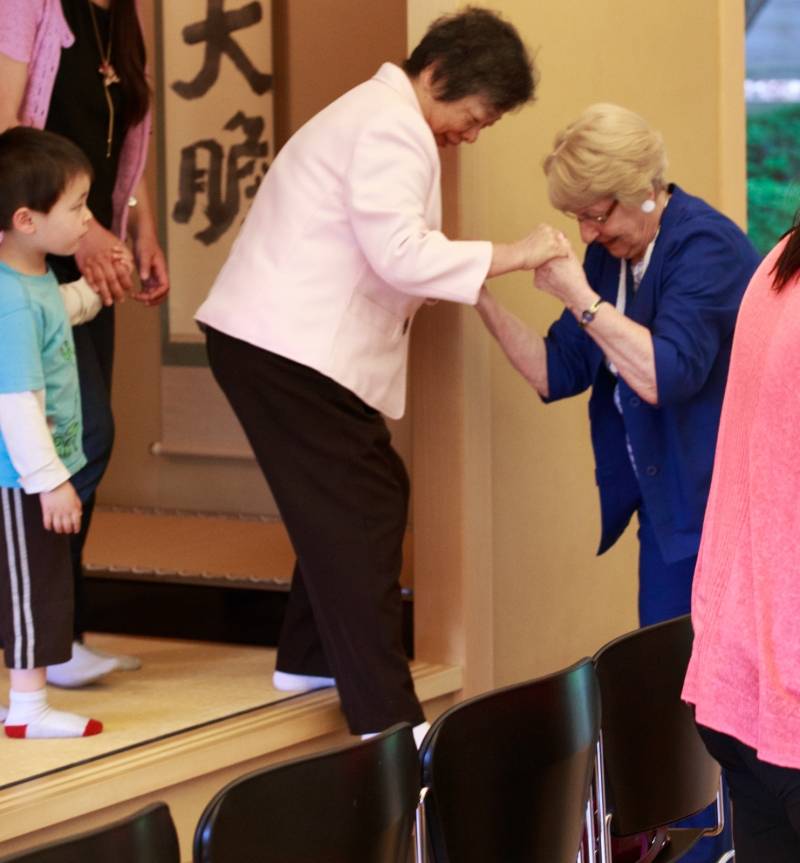
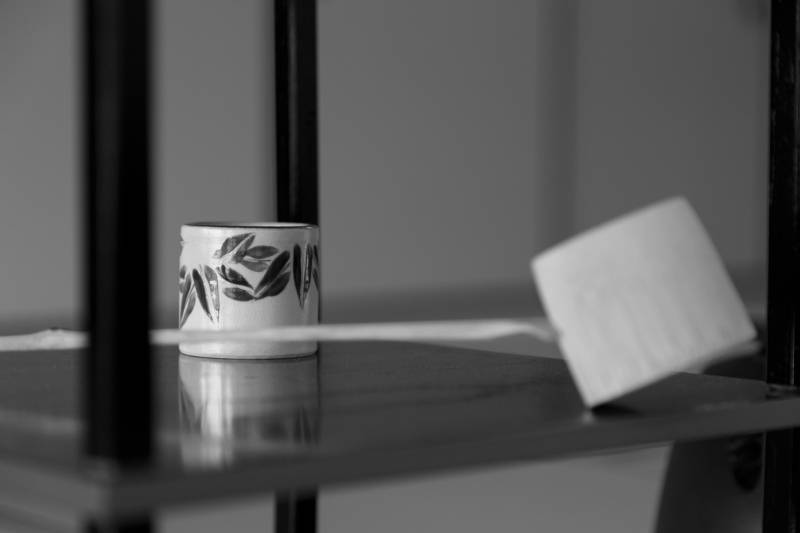
Participation in the tea ceremony costs $6 per person for University of Illinois students, and is otherwise $8 per person; the fee goes toward covering the cost of tea and other materials, as Japan House is privately funded. To register you can contact Nancy Probst via email.
Also, if you are interested in learning how to perform a tea ceremony yourself, Japan House offers a non-credit course during the Fall and Spring semesters every Thursday night for about $8 per night (tea equipment is provided, though you may wish to purchase your own to practice at home). Attendees have ranged from ages 6 to 85, from artists to engineers, so everyone is welcome.








